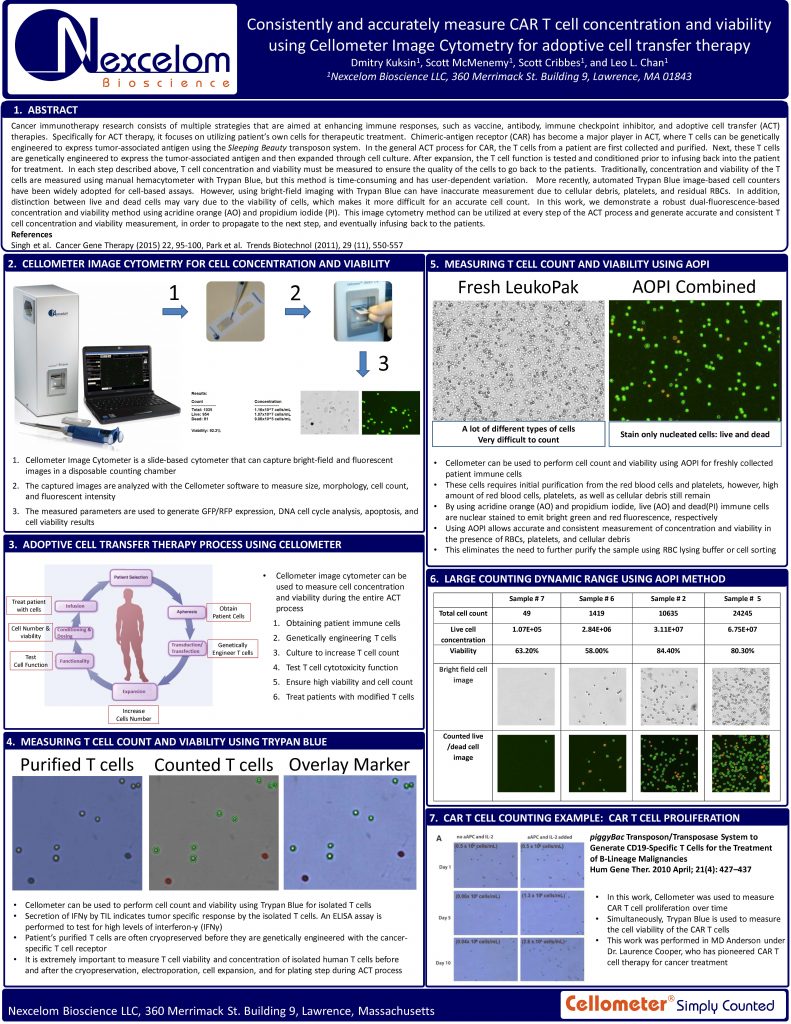Consistently and accurately measure CAR T cell concentration and viability using Cellometer Image Cytometry for adoptive cell transfer therapy
Dmitry Kuksin, Scott McMenemy, Scott Cribbes, Leo L. Chan
Cancer immunotherapy research consists of multiple strategies that are aimed at enhancing immune responses, such as vaccine, antibody, immune checkpoint inhibitor, and adoptive cell transfer (ACT) therapies. Specifically for ACT therapy, it focuses on utilizing patient’s own cells for therapeutic treatment. Chimeric-antigen receptor (CAR) has become a major player in ACT, where T cells can be genetically engineered to express tumor-associated antigen using the Sleeping Beauty transposon system. In the general ACT process for CAR, the T cells from a patient are first collected and purified. Next, these T cells are genetically engineered to express the tumor-associated antigen and then expanded through cell culture. After expansion, the T cell function is tested and conditioned prior to infusing back into the patient for treatment. In each step described above, T cell concentration and viability must be measured to ensure the quality of the cells to go back to the patients. Traditionally, concentration and viability of the T cells are measured using manual hemacytometer with Trypan Blue, but this method is time-consuming and has user-dependent variation. More recently, automated Trypan Blue image-based cell counters have been widely adopted for cell-based assays. However, using bright-field imaging with Trypan Blue can have inaccurate measurement due to cellular debris, platelets, and residual RBCs. In addition, distinction between live and dead cells may vary due to the viability of cells, which makes it more difficult for an accurate cell count. In this work, we demonstrate a robust dual-fluorescence-based concentration and viability method using acridine orange (AO) and propidium iodide (PI). This image cytometry method can be utilized at every step of the ACT process and generate accurate and consistent T cell concentration and viability measurement, in order to propagate to the next step, and eventually infusing back to the patients

